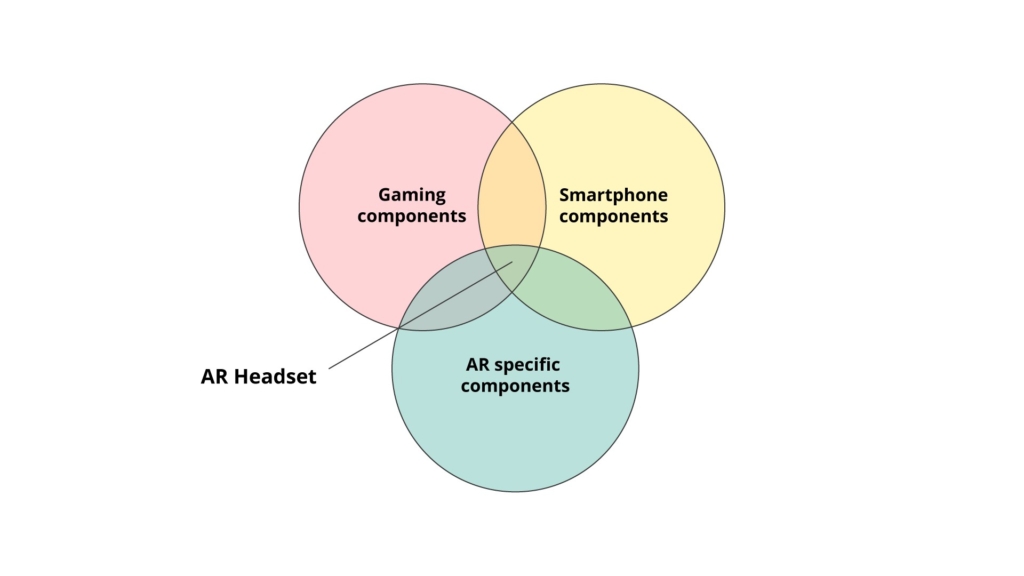Google introduced Stadia at GDC last month creating waves across the tech industry! After listening to the announcement people got really excited about the future of gaming. However, a row of speculations started flowing around, raising concerns about its performance and feasibility across regions, stating several challenges to implementing the technology. Let’s accept it, cloud gaming is not a novel concept, PlayStation Now, Nvidia GeForce Now have been running for a while now and Microsoft announced Project xCloud last year and which will go into testing late this year. Do these technologies start and end at gaming? No, they are the beginning of a new way of experiencing the world around you.
Confused? let me explain what is beyond the implementation of these services in gaming. After spending more than a year piecing information together from industrial AR research and psychology studies to design a type family for AR headsets. I came across many interesting facts and one such fact is the similarity of gaming with Augmented Reality (AR), be it in terms of development or implementation. Starting from the development (use of platforms like Unity, Unreal etc.) to final hardware specs required to run AR experiences, there is a lot in common. To simply visualise the concept let’s look at major components in an AR headset.

Now, if we imagine an AR headset that has to house the components, the mental picture comes out to be a huge headset hanging on your head. But we have made significant development in squeezing it to the size of Hololens/ Magic Leap. Once Stadia/xCloud like technologies gets implemented successfully the AR equation will become simple since all the heavy lifting goes to the cloud. In return, we will have multiple benefits for AR development as well as the most important factor — AR adoption.
Form Factor:
The major components required after shifting to cloud-based processing of data will be advanced displays (better waveguides), sensors and input device (which is usually external, hence no impact on the size of the headset). This means the size of the headset can be reduced significantly. Based on headset manufacturers’ priority that can be utilised to boost the display, expand the battery life etc. But the preferred way to go initially should be reducing the size of the headset to make it look like a regular pair of glasses like North glasses and nreal glasses are trying to make, which can be used in everyday life. Unlike the steampunk style Magic leap or bulky looking Hololens.

The comparison between regular size AR glasses vs AR headsets is very stark but it paints a clear picture of the compromises done to attain regular size AR glasses. Either you increase the size, introduce a fanny pack like in the case of North glasses and Magic Leap or the final answer, reduce the functionality. This is what North and nreal glasses have done, they have very limited features (similar to a smartwatch slapped in front of your eyes) whereas the Hololens and Magicleap have endless applications which are still being explored. So now imagine those endless possibilities placed into a regular size glass where all the major processing is carried out in the cloud using services like Stadia and Azure(xCloud) for AR. Did it already start to sound good?
Drop in the prices:
If you have seen the announcement or read about Stadia then you know the key idea behind these services is to run games on any device/platform (console, browser, smartphones etc). Listening to the point, “different devices” in the gaming context, the nerd’s brain usually thinks of the processing power but let’s keep our nerdiness aside and put our business hat on. What makes people buy these different devices? Aspirations(Damn! I want that dope piece of tech), requirements(I can use it for…) and Money (Can I afford it)? Our brain can justify the first two factors in many ways but the real driver to buy anything is the money in our pocket.
The AR market has a very limited offering in terms of price segmentation, as of now the price bracket we have $2200–$3500. How feasible is that even if you want to buy it just for the sake of testing it? This has been a major reason that we don’t have groundbreaking apps because a significant amount of developers can’t even afford to get their hands on the device. The cloud-based processing will reduce hardware required in the headset which in turn will reduce the overall cost of production. This means there will be room for a price drop and different headset offerings based on our requirements, just like a basic smartphone to powerhouses like (iPhone X and Huawei P30 pro).
A shift in Business:
The AR hardware manufacturers are focussing on enterprise and military applications and this has been a standard procedure to get technologies mainstream for ages. These are the areas where the real cash flow lies to fuel in money for research and development before it becomes ready for mass production. In the case of AR, the focus of the business’ has swayed away from consumer to enterprise products. The main reason is the friction in mass adoption and its application, an example being Google Glass which died young but was resurrected as Glass for industry application. Once the prices go down and more developers and people get to experience the device, there will be an inflow of great ideas and apps to make the tech more usable in day to day life. On the other hand, the size and regular design of glasses will affect the social acceptance of wearing these devices in day to day life. All these factors will drive the businesses to align back to the consumer market. Once that happens we’ll step into the next level of human evolution, merging multiple realities into one.
What are your views on the expansion of cloud services in the AR space? Do let me know in the comments.
